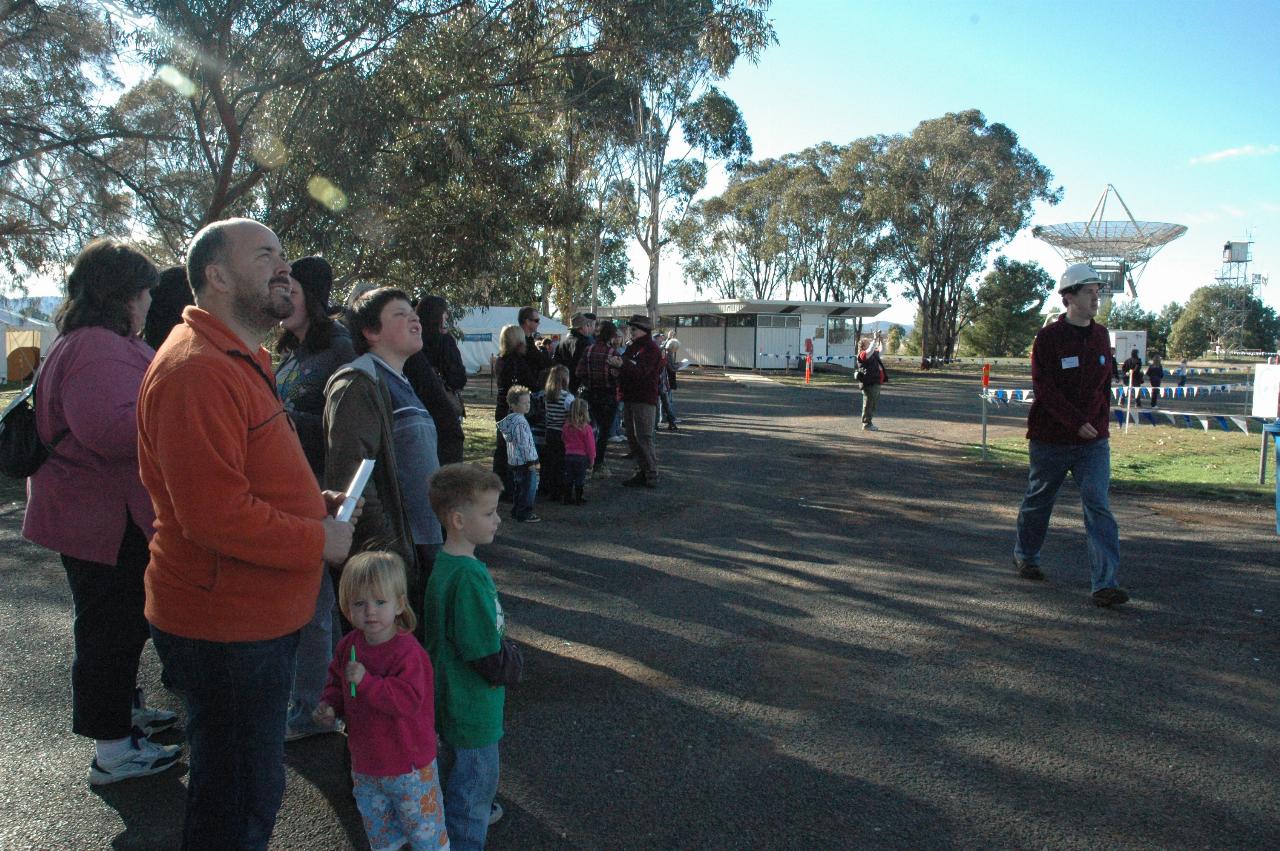
The plan was to spend Saturday and Sunday night in Parkes, the nearest town to the telescope. Alas, there were no rooms at the inn on Saturday night, but Forbes had rooms. And it's only 33 km from Parkes, and an additional 25 km to the telescope. Some other visitors in the motel suggested getting there early - advice also from the Open Days web site. So I did just that - on the road about 08:30, reaching the telescope a little after 09:00.

Tour queue at 09:27

Tour queue at 11:01
The telescope tour line grew as the morning continued, though it was not as bad as it was on Saturday, when an estimated 1500 people toured. Each group had about 12 people. There was also a minimum height requirement, as some of the stairs were steep, and holding onto the rail was essential. The poor man on the left of the left photo had his 2 children, and the little girl was too short, so he missed out on the tour.
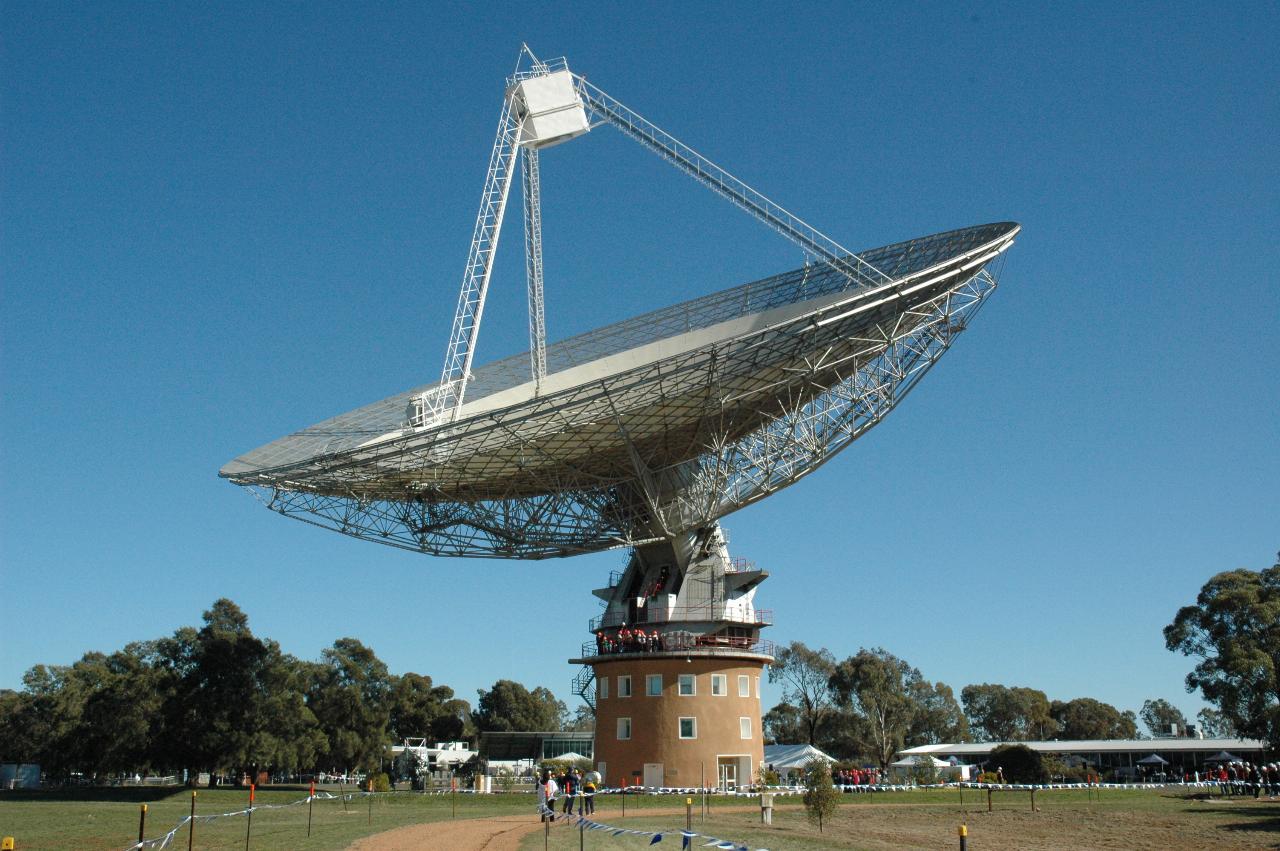
This gives a good view of the whole operation. The building below the dish has three levels plus the telesecope mechanicals above. The ground floor is the kitchen area (and probably some plant). The next floor is for the astronomers, and the top floor holds the telescope control and signal processing equipment. The line of people waiting to go on the tour is at the right of this image.

Tour groups were identified by the colour of the hard hats. I was on a green group. Here we are assembling at the base of the building before climbing up to the top.
There are two plaques on the base of the tower to mark the inauguration of the telescope.
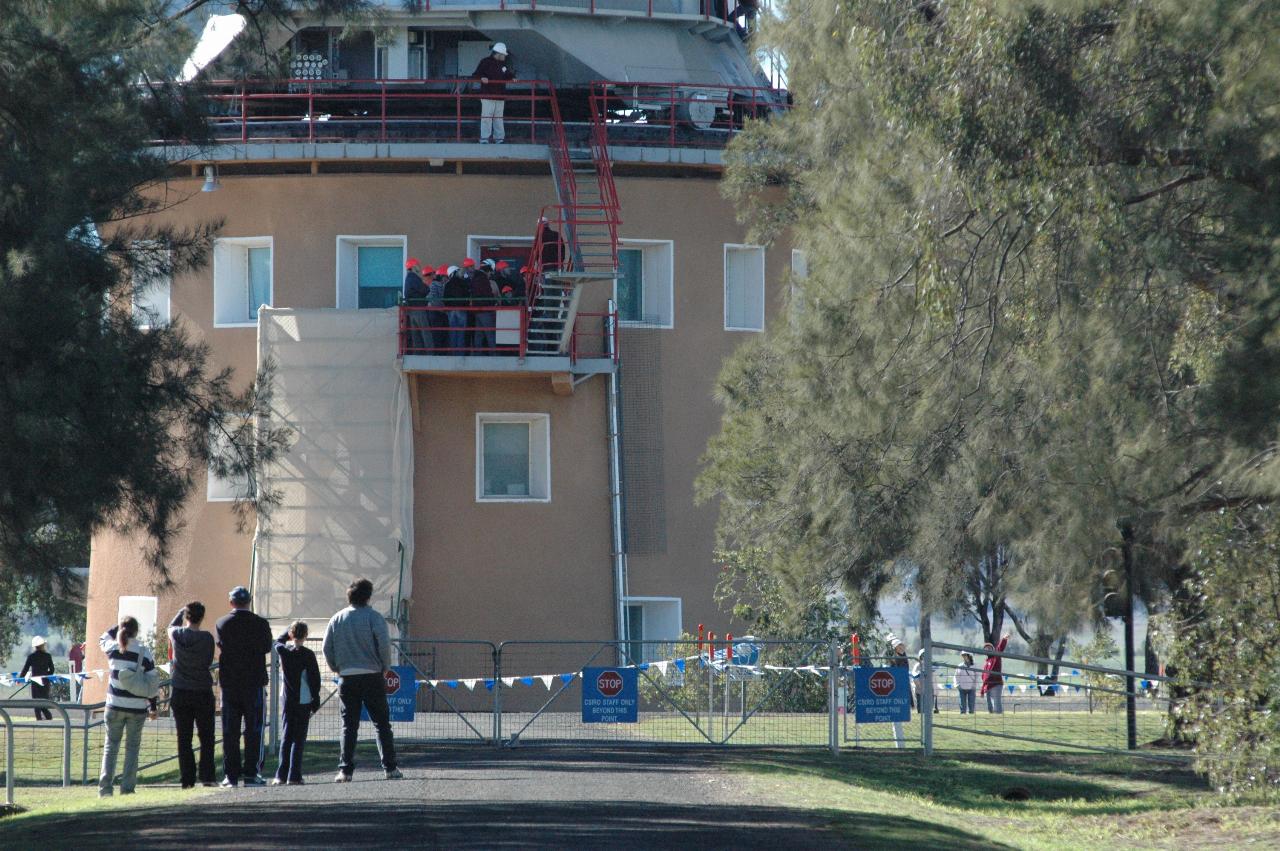
This is the other side of the telescope from the above photo. The tour starts by climbing the temporary stairs inside the cloth structure in front of the people with backs to camera. There is a tour group at the top of the temporary stairs; the set of stairs leading to the top level are a permanent part of the structure. The guide said that if we were unhappy to continue up, we could enter the telescope building from a door behind the assembled group of red hats. I don't think anybody from our group used it.
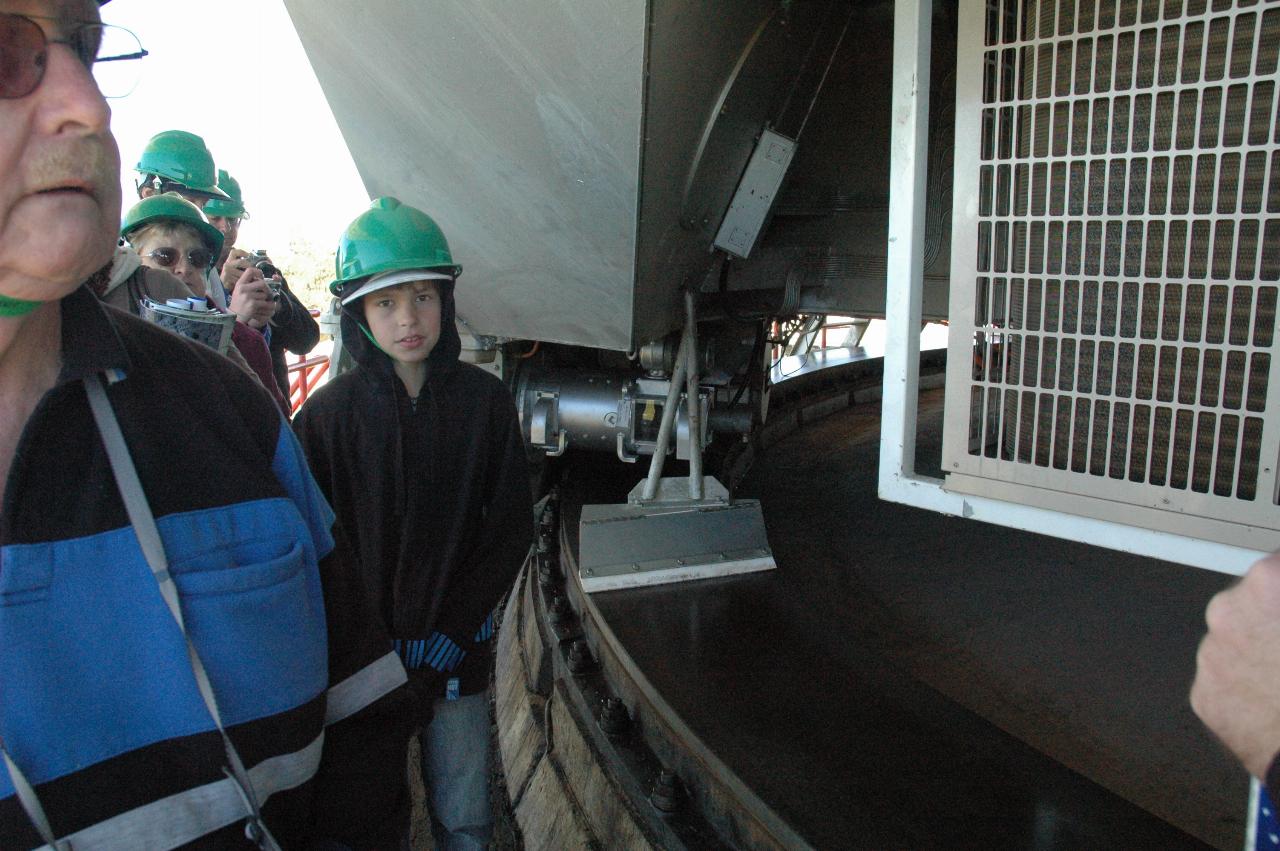
It's not all that clear, but the flat surface below the silver plate about mid image is the surface on which the telescope rotates. It is still in excellent condition, given that it's 48 years old. This is just as well, because replacing it would appear to require dismantling the entire telescope, as it carries the weight (320 tonnes for the telescope, and 400 tonnes for the counterweight!). The silver plate is a brush arrangement to remove debris from the track when the telescope rotates. The horizontal cylindrical shape behind the brush is one of the (four, I think) electric motors and gear drive reduction units which rotate the telescope.

This is the azimuth control section. It tilts the telescope. The big object in the middle is the locking pin used to secure the telescope in the upright position. Currently manually operated, but it is planned to be electrically operated, and thus allow remote operation. The man is the tour guide.
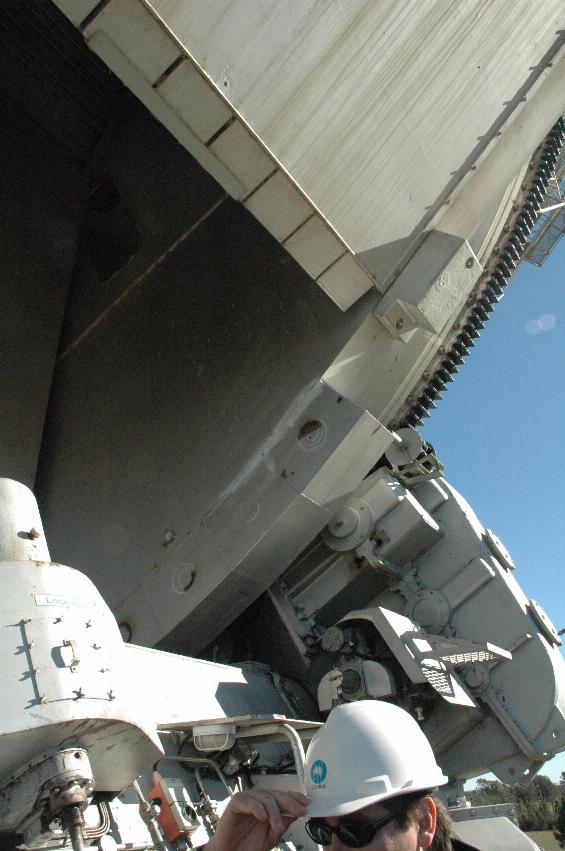
In the same area as the last photo, but showing the teeth which are part of the telescope base, and which are used to tilt it. The top of the image is the counterbalance - cement blocks filled with lead. As it weighs more than the telescope, any failure of the drive mechanism results in the telescope naturally returning to the straight up position, where it can be locked in place if needs be.
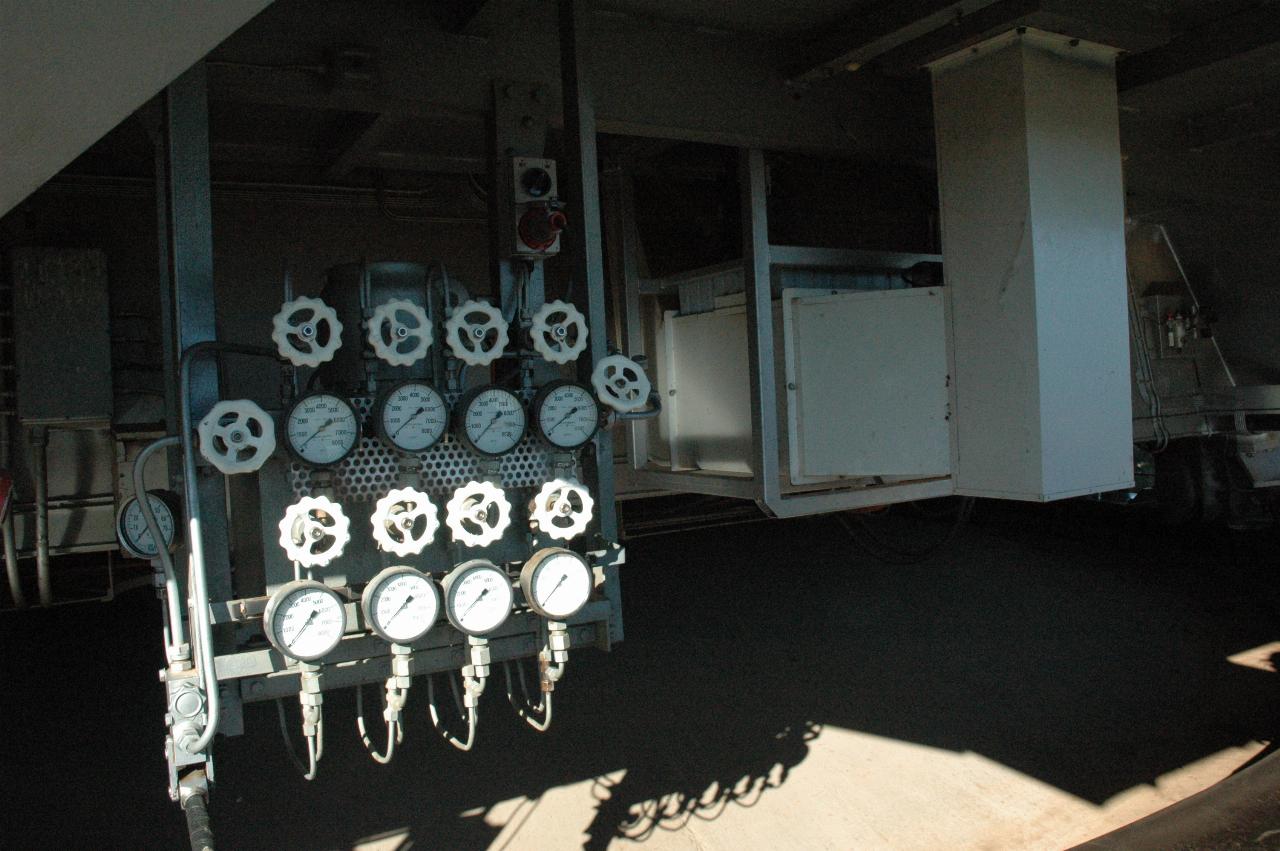
This is a hydraulic system which allows the telescope to be lifted off the rollers upon which it rotates. The reason is to prevent the rollers developing flat spots, which would decrease the accuracy of positioning, and seriosly degrade the performance.

Looking roughly east, or south east, the nearest telescope is now retired. It used to move along railway tracks to allow interferometry operations, but has been out of service for many years. The tree on the far left has grown inside the railway tracks, which gives an idea of how long it has been out of service! The dish to the right is a new design, and will be covered later.
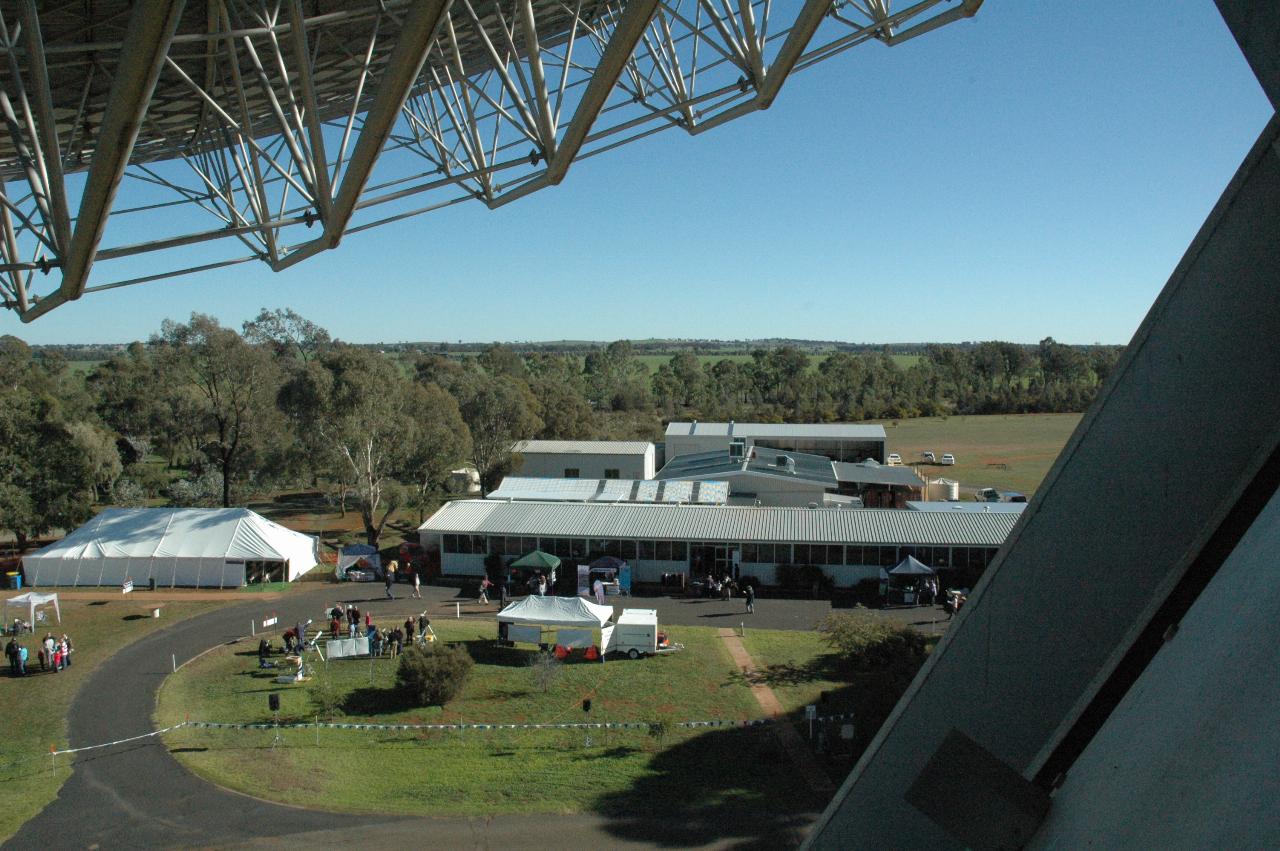
The lab and accommodation wing. The tents are for various Open Day activities, including the local astronomical society with telescopes! Optical ones, that is.

The Visitor Centre, and a few additional tents.